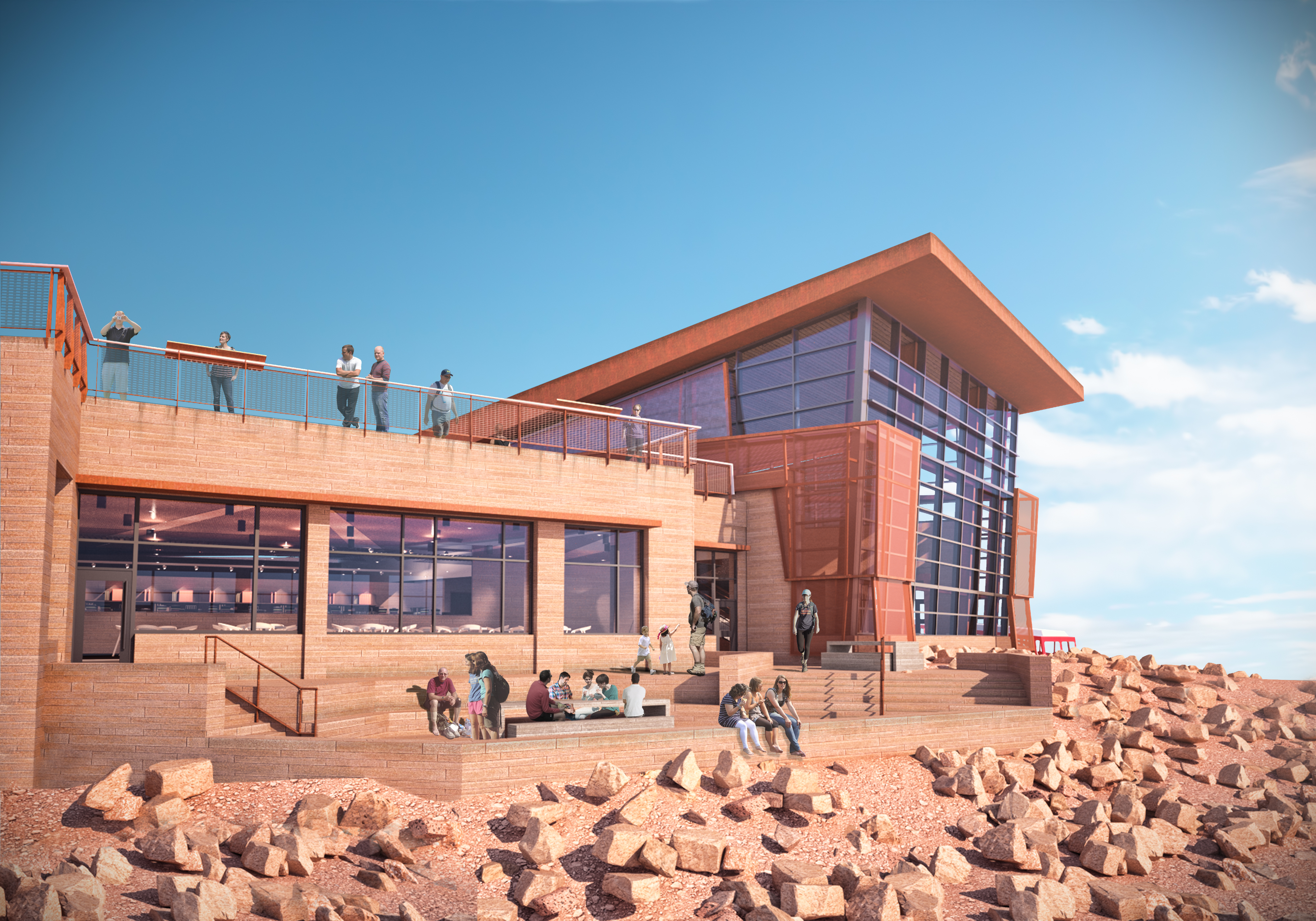Story at a glance:
- The Pikes Peak Summit Visitor Center, designed by GWWO Architects in association with RTA Architects, is expected to open in summer 2021.
- Visitors can arrive at the new visitor center by car, cog railway, or via a 12-mile hike.
- The center is designed to earn the Living Building Challenge certification.
Views of rigid rocks and vivid greenery atop Pikes Peak in Colorado inspired the famous patriotic ballad “America the Beautiful” in 1893. Now, after more than five years of design and construction, the new Pikes Peak Summit Visitor Center designed by GWWO Architects in association with RTA Architects is expected to open in late May or early June (weather dependent) 2021.
Situated 14,115 feet above sea level, the visitor center is the highest altitude construction site in America. With more than a half-million visitors each year, Pikes Peak is the most visited of Colorado’s great mountains and one of the most accessible of the “fourteeners”—a title given to peaks that exceed 14,000 feet in elevation. The Colorado Geological Survey says there are 58 “fourteeners” in Colorado—the most of any state.
Baltimore-based architecture firm GWWO specializes in the design of educational and cultural facilities while focusing on the historical, cultural, and ecological contexts of project locations. Specifically for the Pikes Peak Visitor Center, the firm emphasized both ecological stewardship and accessibility.
Pikes Peak is one of the only ‘fourteeners’ whose summit anyone can easily reach, regardless of physical ability, according to GWWO. Visitors can arrive at the center by car, cog railway, or via a 12-mile hike.
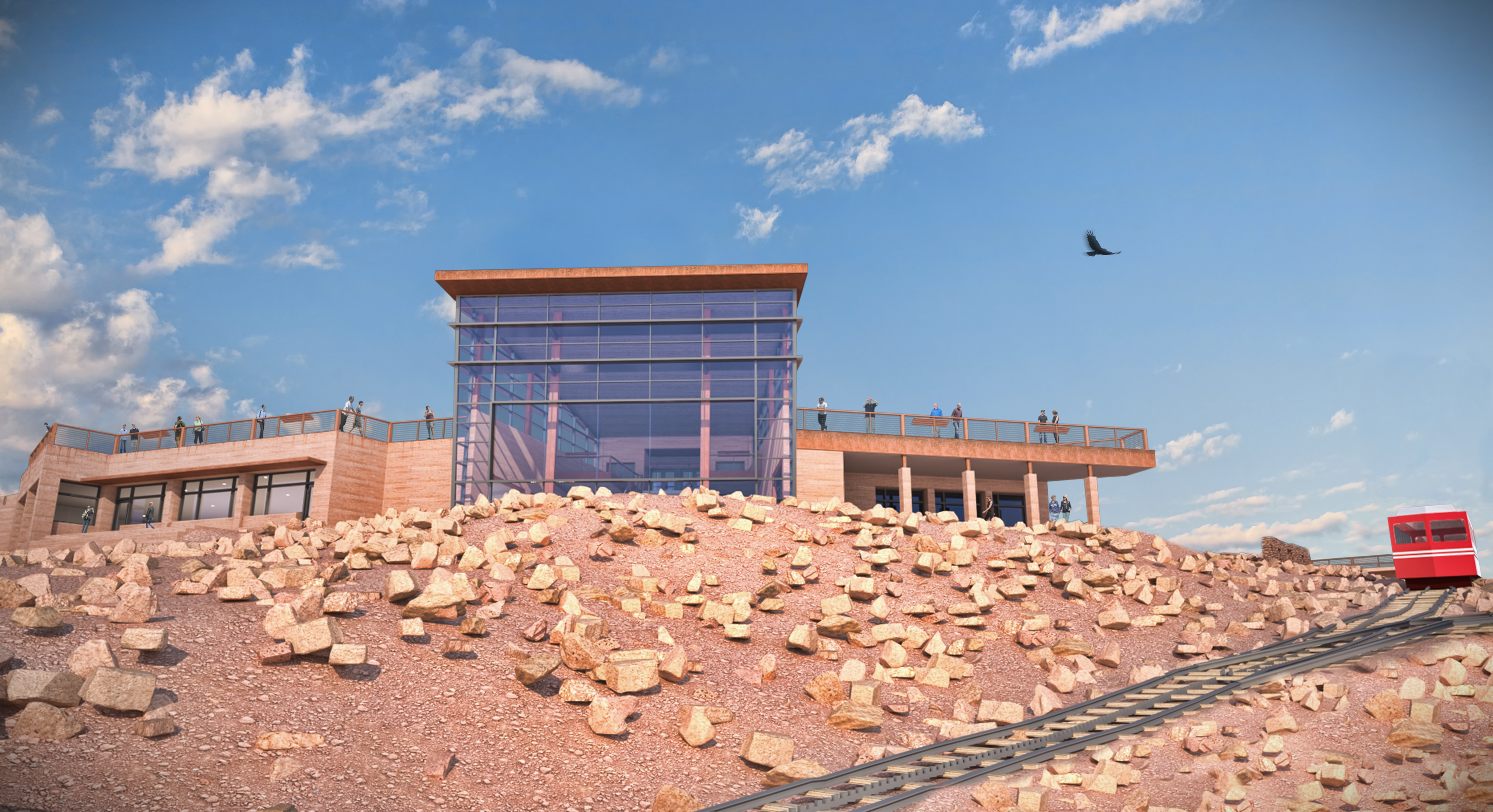
The center’s rustic colors and natural materials, like locally sourced timber, connect the building with the landscape. Photo courtesy of GWWO Architects and RTA
GWWO designed the building to connect with—rather than usurp—the land. “Creating an ecologically responsible environment where all visitors can comfortably experience the history and breathtaking setting informed every decision about the design, inside and out,” said Alan Reed, GWWO design principal, in a press release.
The low-rise structure embedded into the mountainside is seemingly carved from the southeast side of the peak. Its form and materials, inspired by Pikes Peak granite, minimize the visual impact of the building.
Warm rustic colors and natural materials like locally sourced timber further connect the interior to the landscape. The designers wanted the building to appear as being of the mountain rather than on the mountain.
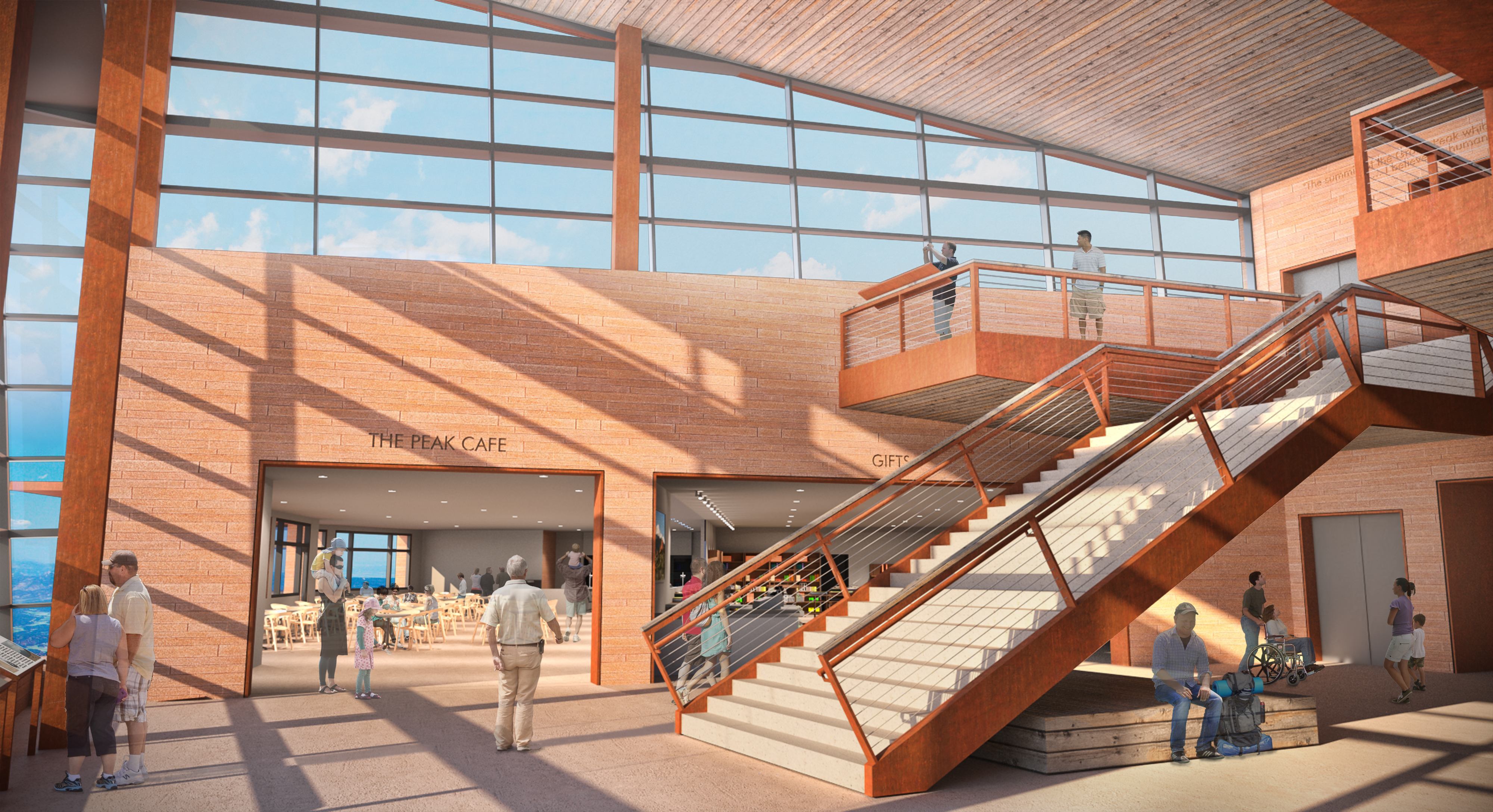
Inside, visitors can dine at a cafe or check out the exhibits and gift shop. Photo courtesy of GWWO Architects and RTA
To accompany the existing natural views, the center includes indoor exhibits, dining, a gift shop, and restrooms. Outdoors, visitors can wander a network of walkways, roof decks, and outdoor terraces.
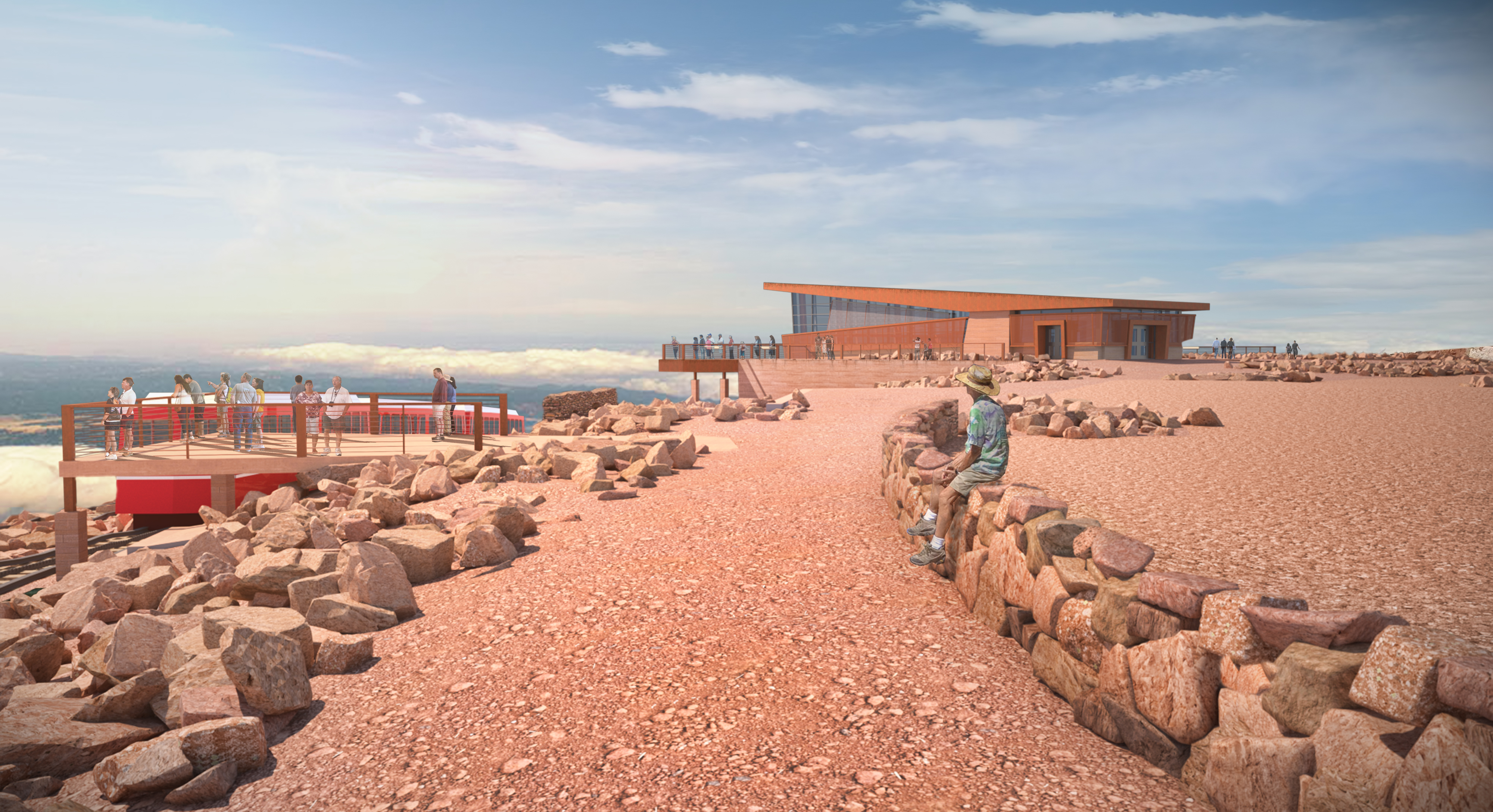
Visitors can wander along walkways and terraces outdoors. Photo courtesy of GWWO Architects and RTA
Designing with the environment in mind was central to GWWO. The visitor center is expected to earn a minimum of LEED Silver—with the employment of passive design strategies—and also achieve net-zero water. In addition, the center is projected to save more than 350,000 gallons of water per year over the center’s current system.
It also hopes to pursue the Living Building Challenge certification, which would make the facility the first within a National Historic Landmark and the first building in Colorado to achieve.
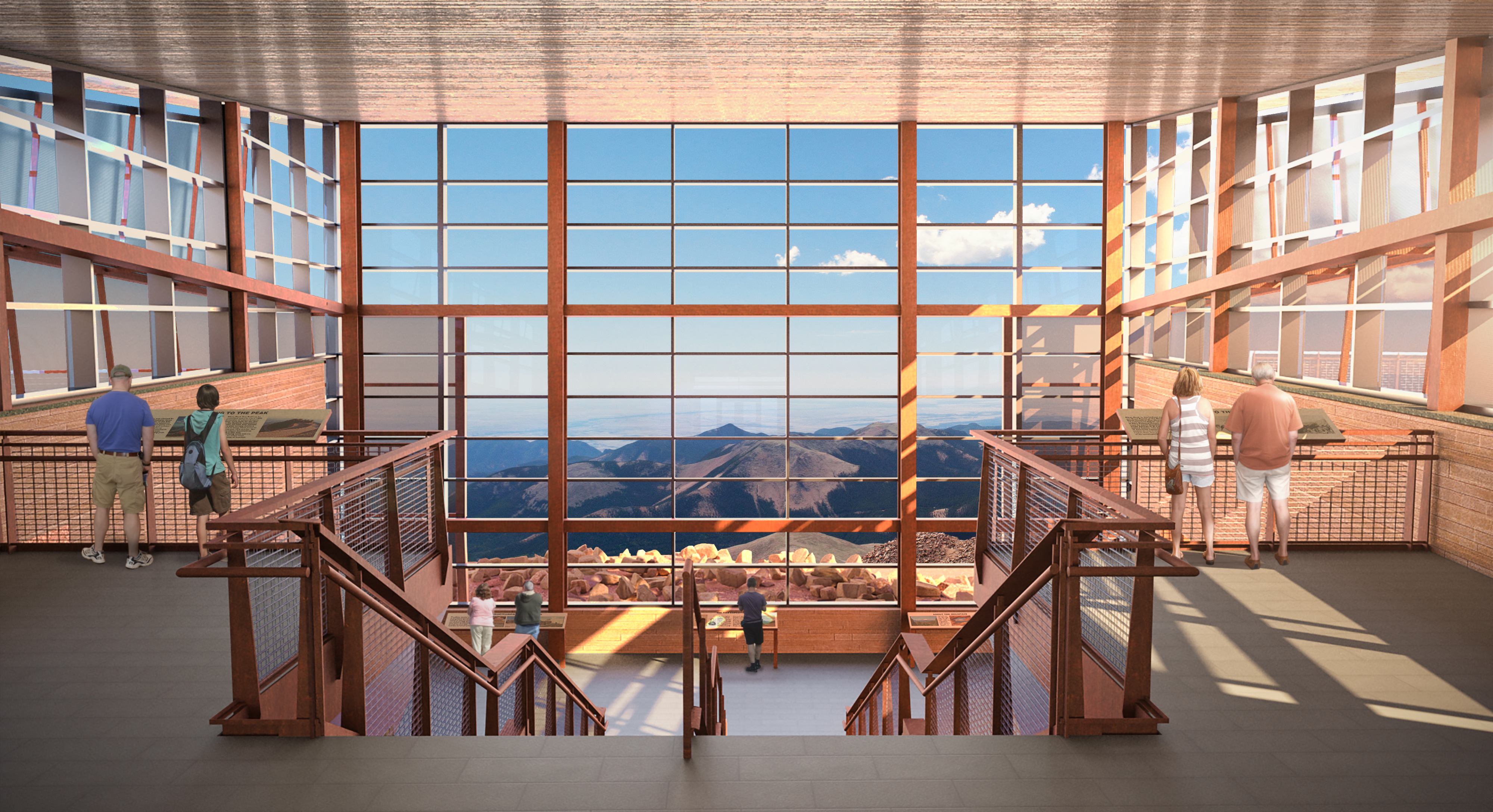
High-performance glass allows for daylight to pass through the facility while protecting against extreme weather patterns, like intense wind or frigid temperatures. Photo courtesy of GWWO Architects and RTA
A major challenge that GWWO faced when building at such a high altitude was to account for the extreme climate, where winter temperatures can reach as low as -40 degrees Fahrenheit and winds can reach up to 230 miles per hour. GWWO selected durable materials, such as high-performance glass, to counter this challenge.
Project Credits
Project name: Pikes Peak Summit Visitor Center
Location: Cascade, CO
Completed: 2021
Size: 38,000 square feet
Design Architect: GWWO Architects
Architect-of-Record: RTA Architects
Construction Manager: GE Johnson
Landscape Architect: DHM Design
Exhibit Design: Gallagher & Associates
MEP Engineer: BranchPattern
Structural Engineer: HCDA Engineering, Inc.
Civil Engineer: Kiowa Engineering Corporation
Extreme Climate Consultant: AECOM
Food Service Design: Webb Food Service Design
Specifications: NASH Architectural Solutions
Code and Accessibility: Jensen Hughes
Historic Preservation: The Preservation Studio
Vendor: Aramark
Public Relations and Communication: Bachman PR

